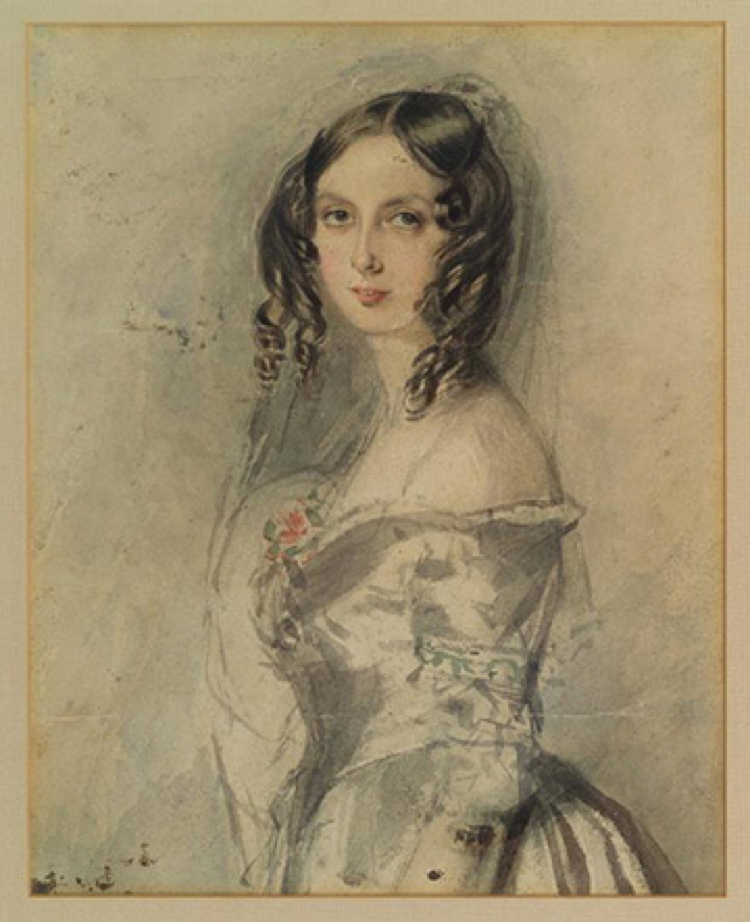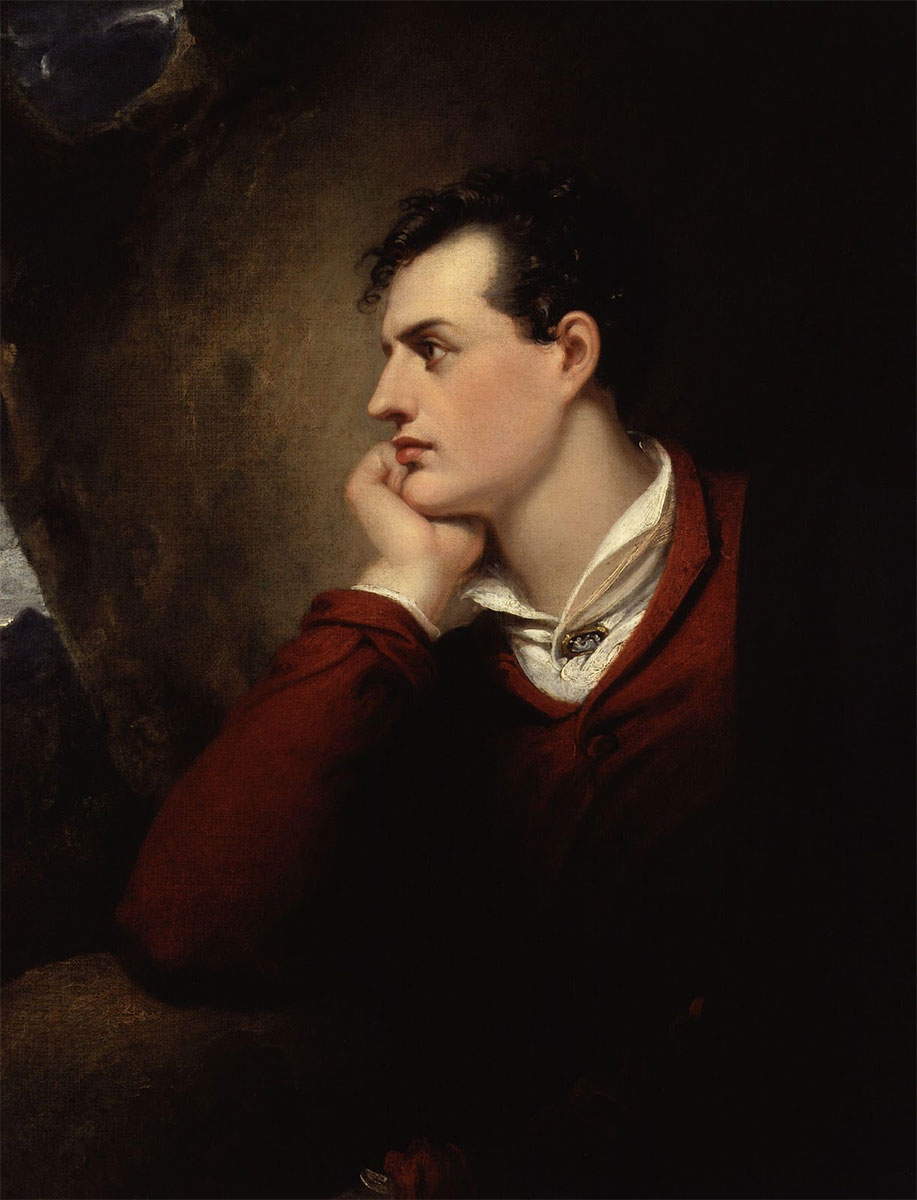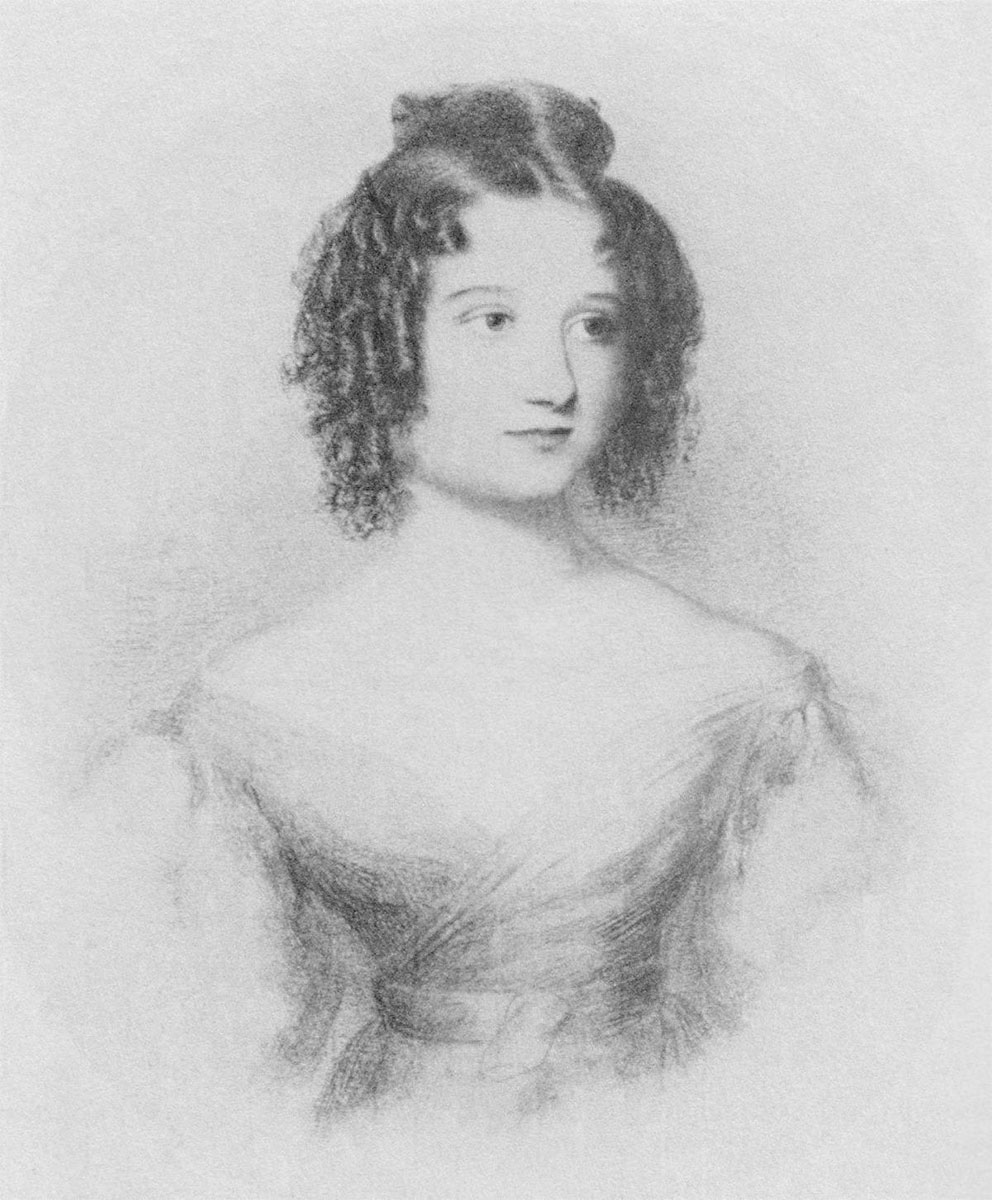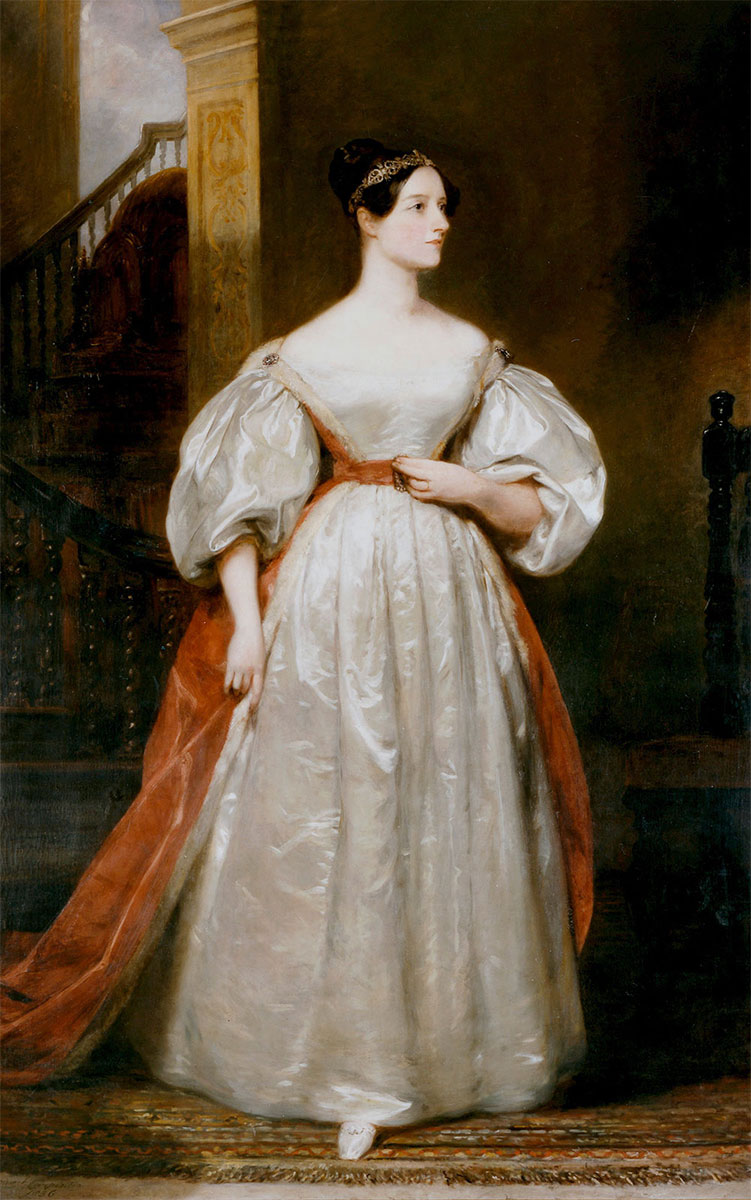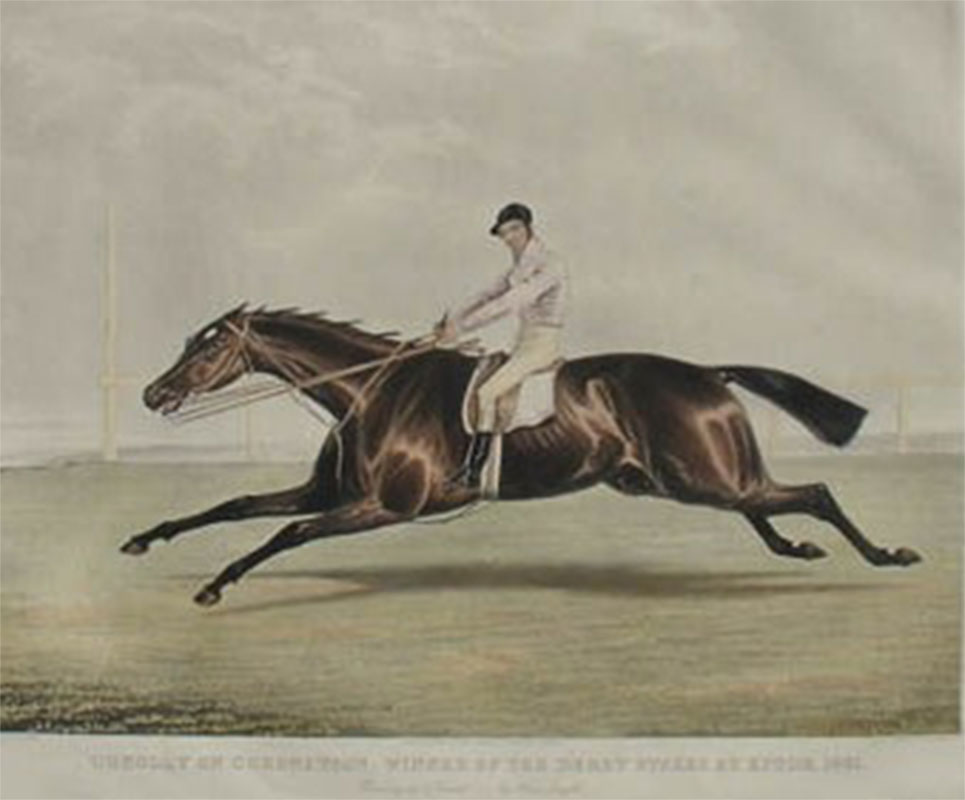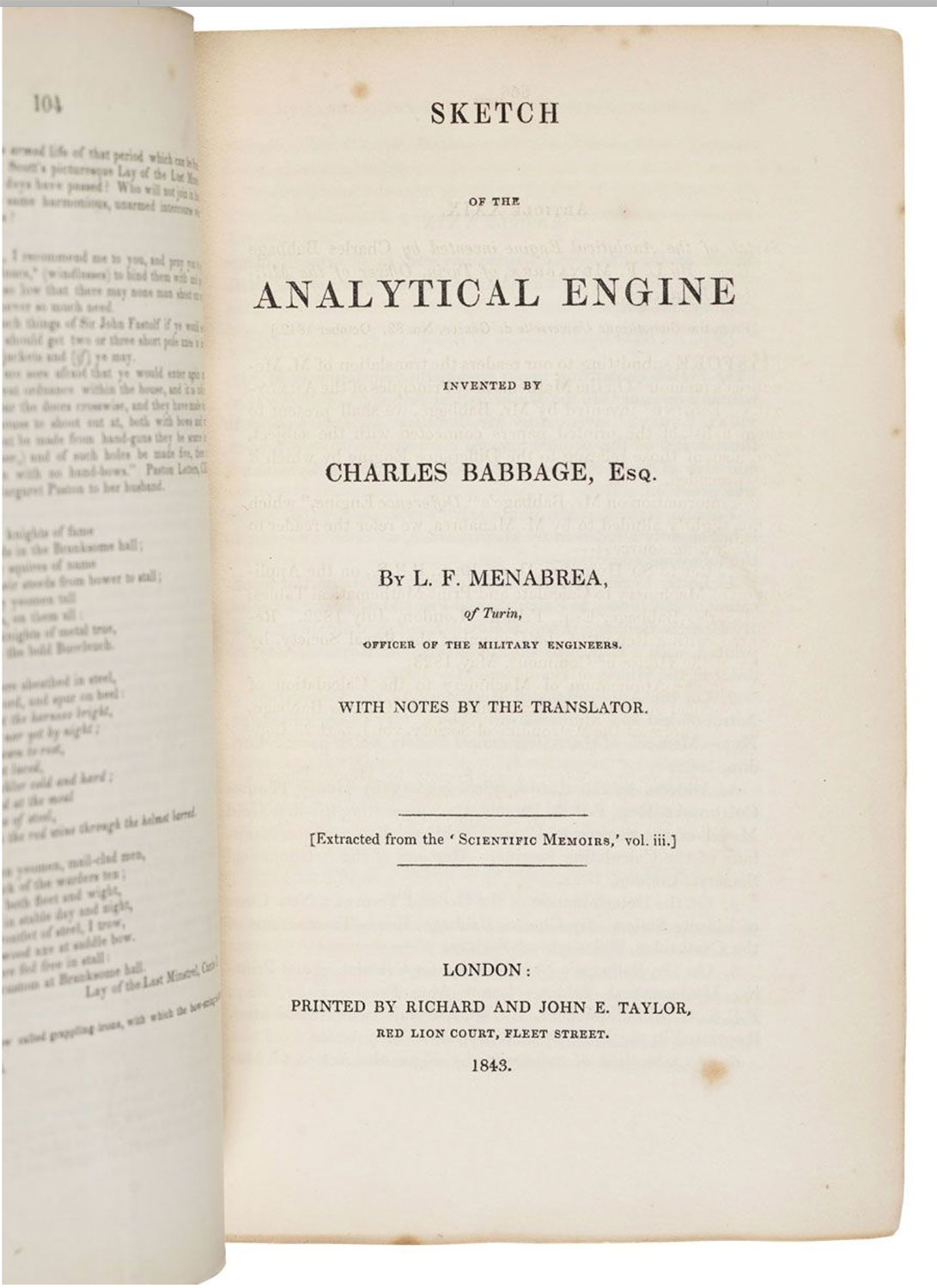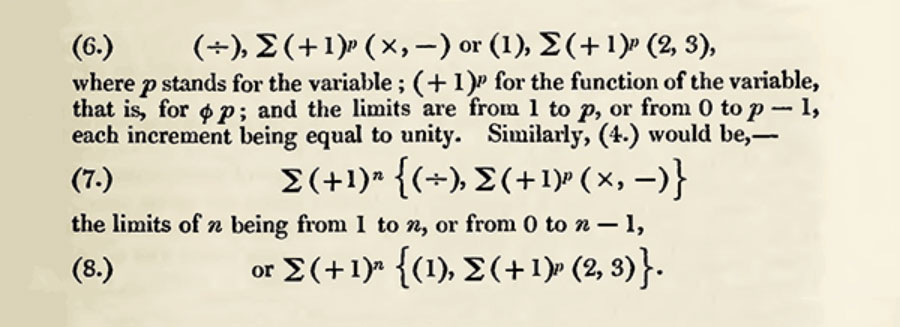Ada Lovelace, the World’s First Computer Programmer
Timeline Created and Written in July/August 2020 by Marla Carlton in honor of all women in science, technology, engineering, and math everywhere.
“Lovelace’s insights were so far ahead of their time, they were lost for a century and only rediscovered in the 1940s, as the first working computers appeared” (Klein).
-
The Birth of Ada Lovelace
In 1815, when Ada was born no one could imagine that she would grow up to be one of the brightest minds in science. Still today, over 170 years later, her theories on artificial intelligence and her view that a computer cannot think creatively, but rather only do what they are programmed to do has not been proven wrong. She only lived 36 years, imagine what she could have accomplished had she lived longer.
-
Ada’s father, Lord Byron
Lord Byron inquired about his six-year-old daughter in a letter to his wife, "Is the Girl imaginative?. . . Is she social or solitary—taciturn or talkative—fond of reading or otherwise? and what is her tic? I mean her foible—is she passionate? I hope that the Gods have made her anything save poetical—it is enough to have one such fool in a family."
-
Ada’s mother, Lady Byron
Anabella, Ada's mother, was "an exceptionally intelligent woman who excelled in everything from linguistics to mathematics" (Rioux). Her husband, Lord Byron nicknamed her the “Princess of Parallelograms."
-
Ada’s Grandmother, Judith Noel, Lady Milbanke
Ada's mother was away often during Ada's early years, and Ada's maternal grandmother often took care of her. Lady Noel possessed a notoriously sharp tongue" (Seymour) and was hard on Lady Byron for leaving Ada so much. Lady Milbanke died when Ada was only six years old.
-
Ada’s Childhood
In the early 19th century, Ada, just like all girls of that time, was schooled at home. Even while Lady Byron was away, which she often was, she "enforced a system of education for Ada that involved long hours of study and exercises in self control" and she learned mathematics "to the level of elementary geometry and algebra" (Wolfram). Even though she "led an isolated childhood on her mother’s rented country estates, with governesses and tutors," she had a cat called Mrs. Puff. (Wolfram).
-
Ada and ‘Flyology’
“I have got a scheme,” she wrote to her mother, “to make a thing in the form of a horse with a steam engine in the inside so contrived as to move an immense pair of wings, fixed on the outside of the horse, in such a manner as to carry it up into the air while a person sits on its back" (Klein).
-
Ada’s Teenage Years
In June 1829, at the age of thirteen, Ada contracted a severe case of the measles, which caused her to be bedridden and paralyzed for almost three years. Even while she was sick, she continued her studies in mathematics and technology. At sixteen, she could finally walk on crutches, and by seventeen, Ada was well enough to travel to London with her mom for her first season of socializing. Even though she could not leave her house, she continued her studies in mathematics and technology. At seventeen years old, Ada was well and went to London for her first season of socializing. It was in this first party she attended where she met the mathematician Charles Babbage.
-
Ada Meets Charles Babbage
Ada met Charles Babbage at a party at his house when she was seventeen. She and her mother returned later to view a demonstration of Babbage's Difference Engine "... the first device we might consider to be a computer in the modern sense of the word ..." (Simon and Maxfield). It was Ada's encounter with this device, "... the Difference Engine [that] seems to be what ignited her interest in mathematics" (Wolfram).
-
Ada and “Scientist” Mary Somerville
On this same trip to London, when Ada met Charles Babbage, Ada met Mary Somerville, the woman for whom the word ‘Scientist’ was made” (Kelly). Mary Somerville encouraged Ada to continue her studies and suggested she read Euclid’s Elements of Geometry. After Ada left London, she corresponded regularly with Somerville and Babbage about Mathematics.
-
The Analytical Engine
In November 1834, at a dinner party at Mary Somerville’s “Ada heard … Babbage’s ideas for a new calculating engine, the Analytical Engine. He conjectured: what if a calculating engine could not only foresee but could act on that foresight. Ada was touched by the ‘universality of his ideas’” (Toole). "Babbage worked on plans for this new engine and reported on the developments at a seminar in Turin, Italy in the autumn of 1841" (Toole). If Babbage had ever finished the machine, Ada's program "would have been able to compute a mathematical sequence known as Bernoulli numbers" (Simon and Maxfield).
-
Ada Married with Kids
On July 8, 1835, at age nineteen, Ada married William King, a man educated at Eton and Cambridge, whom she had met through Mary Somerville. He was ten years older than her, but they hit it off. In the first five years of marriage, most of Ada’s time was taken up by having babies. However, she still found “some time for horse riding, learning the harp, and mathematics, including topics like spherical trigonometry” (Wolfram). Ada had three children, and on June 30, 1838, she became the Countess of Lovelace after her husband earned the title Earl of Lovelace.
-
Ada Returns to Her Math Studies
In late 1839, when her third son was approximately three months old, Ada resumed her math studies. She studied calculus with her tutor “mathematician-logician Augustus De Morgan, the first professor of mathematics at the University of London” (Britannica). In the 1800s women could not attend universities. In a letter to Ada’s mother, De Morgan wrote that Ada’s talent could see her become “an original mathematical investigator, perhaps of first-rate eminence” (Crockett). Ada stated “I believe myself to possess a most singular combination of qualities exactly fitted to make me pre-eminently a discoverer of the hidden realities of nature" (Wolfram).
-
Ada’s Two Vices: Gambling and Opium
In the 1840s Ada tried to use her mathematical prowess to "program" the outcomes of the horse races. Babbage and Ada passed a book back and forth, which may have included programs on how to predict the winners. She lost quite a bit of her family's fortune, even pawned the family's diamonds. And then there was opium. "By the late 1800s, women made up more than 60 percent of opium addicts," Ada included. (Trickey)
-
Ada’s Translation & Notes
Ada's Notes "... contained statements by Ada that from a modern perspective are visionary. She speculated that the Engine 'might act upon other things besides number... the Engine might compose elaborate and scientific pieces of music of any degree of complexity or extent'. The idea of a machine that could manipulate symbols in accordance with rules and that number could represent entities other than quantity mark the fundamental transition from calculation to computation. Ada was the first to explicitly articulate this notion ... She has been referred to as 'prophet of the computer age'. Certainly she was the first to express the potential for computers outside mathematics" (Computer History Museum).
-
Note G, The First Computer Program
In July 1843, she wrote a letter to Babbage which stated, "I am working very hard for you; like the Devil in fact; ... I want to put in something about Bernoulli’s Numbers, in one of my Notes, as an example of how an implicit function may be worked out by the engine, without having been worked out by human head & hands first." Her "algorithm for the engine to compute Bernoulli numbers ... is considered the first algorithm ever specifically tailored for implementation on a computer. The notes also emphasized the difference between the Analytical Engine and previous calculating machines, particularly its ability to be programmed to solve problems of any complexity. The engine has been recognized as an early model for a computer and her notes as a description of a computer and software" (Deffree).
-
Ada after her seminal work
After Ada's Notes were published, she wrote this to her lawyer: “It does not appear to me that cerebral matter need be more unmanageable to mathematicians than sidereal & planetary matter & movements; if they would but inspect it from the right point of view. I hope to bequeath to the generations a Calculus of the Nervous System.” "An impressive vision — 10 years before, for example, George Boole would talk about similar things" (Wolfram). Too bad her health failed her shortly after she published her translation and Notes. In 1851, when she visited the famed Great Exhibition in London, Ada was very frail. By 1852, Ada knew she had cancer and was in horrific pain.
-
Ada haunted Charles Dickens
Dickens was "passionately engaged with the scientific advances of his day. His weekly magazine, Household Words, for example, included numerous contributions from Michael Faraday, the discoverer of electromagnetic induction" (Christies). When Ada was thirty-three, she visited Charles Dickens in Brighton. After she left, Dickens wrote her a letter that "strange things were happening at his hotel. He wondered whether Ada was haunting him, and if so: I hope you won't do so" (Toole). On her deathbed Ada requested to see Charles Dickens, and asked him to read a scene from "Dombey and Son" where Paul Dombey, a 6-year-old boy, dies.
-
Ada’s Death and Burial
Ada died at the age of 36, the same age her father Lord Byron was when he died. Neither Babbage or Ada's mother attended her funeral. Against her mother's wishes, Ada chose to be buried in the Byron family vault inside the Church of St. Mary Magdalene in Hucknall, a small town in England. "Had [Ada] survived longer, there is no telling what even more significant contributions to science she could have made" (Taranovich).
-
Alan Turing and Lady Lovelace’s Objection
In 1950, over 100 years after Ada's death, Alan Turing published a paper, "Computing Machinery and Intelligence" with the premise "I propose to consider the question, ‘Can machines think?’" In his paper, he "devotes a significant portion ... to countering what he calls Lady Lovelace's objection and ... quotes her verbatim" (Jardine). Turing “proposed that a computer can be said to possess artificial intelligence if it can mimic human responses under specific conditions … " (Mind Matters). Ada stated the opposite in her 1843 Notes on the Analytical Engine.
-
Ada’s Notes Republished by B.V. Bowden
In 1953, a little more than one hundred years after her death, Lovelace’s notes on Babbage’s Analytical Engine were republished by B. V. Bowden, an English scientist and educationist in Faster Than Thought: A Symposium on Digital Computing Machines. "At a time when computer programming was slowly becoming an occupation, she began to be recognized as a programming pioneer and visionary" (Mind Matters). "Technology caught up to [her] vision only a century later" (Hart).
-
Ada and the Department of Defense
On December 10, 1980, the Department of Defense named a programming language "'Ada' in her honor'"(Toole). "The DOD Military Standard for the language, “MIL-STD-1815,” was given the number of the year of her birth" (Deffree). Ada is still used today and "the programming has been used in high-integrity/safety-critical/high-security domains including commercial and military aircraft avionics, air traffic control, railroad systems, and medical devices" (Taranovich).
-
The Lovelace Test
In the early 2000's, Professor Selmer Bringsjord (born 1958), current chair of the Department of Cognitive Science at Rensselaer Polytechnic Institute and a professor of Computer Science and Cognitive Science, created a test to rival the Turing test and named it The Lovelace Test. According to Bringsjord, “Ada Lovelace had a deep, accurate understanding of what computation is. ... I care about what she thought was a big, missing, and perhaps eternally missing, piece in a computing machine, that it could not be creative" (Mind Matters). According to Professor Selmer Bringsjord, a computer would need to write a novel for it to convince him that a computer can think creatively.
-
The Lovelace Test 2.0
Mark Riedl, an associate professor at Georgia Tech’s School of Interactive Computing in Atlanta, has developed what he calls The Lovelace Test 2.0. He builds from the Lovelace Test and goes one step further, in that he has a human judge "directly comparing the relative intelligence of different agents" (Riedl).
-
Ada and Hillary Clinton
In 2016, Hillary Clinton hired 60 mathematicians and statisticians to make a secret software program she named Ada. Ada was supposed to help her win the election by predicting how voters would vote. According to Professor Gary Smith, author of The AI Delusion, “the developers overlooked a critical fact that may have played a role in Clinton’s defeat” (Mind Matters). Imagine that Clinton planned to reveal that Ada had helped her in becoming the first woman president. No such luck. More than 150 years later, Ada Lovelace is still correct; computers cannot think creatively, at least not yet.
-
Ada Lovelace Day
What Ada accomplished in her short life of only 36 years is remarkable. What’s even more remarkable was how she accomplished so much as a woman in the mid-1800s. Let us celebrate Ada Lovelace and her remarkable achievements, as well as the many women who have contributed and continue to contribute significantly in the fields of science, technology, engineering, and mathematics (STEM). This year Ada Lovelace Day is October 13, 2020.
Works Cited for this timeline:
“Ada Lovelace: The First Computer Programmer.” Encyclopædia Britannica, Encyclopædia Britannica, Inc., www.britannica.com/story/ada-lovelace-the-first-computer-programmer.
“Ada Lovelace.” Ada Lovelace | Babbage Engine | Computer History Museum, www.computerhistory.org/babbage/adalovelace/.
“Ada Lovelace: Founder of Scientific Computing.” San Diego Supercomputer Center, UC San Diego, www.sdsc.edu/ScienceWomen/lovelace.html.
“Charles Dickens and ‘the First Computer Program.” Christie’s. 29 May 2020, www.christies.com/features/The-Analytical-Engine-Babbage-Lovelace-and-Dickens-10510-7.aspx.
Crockett, Moya. “Ada Lovelace’s Most Inspiring Quotes about Science, Confidence and Hard Work.” Stylist, Stylist, 9 Oct. 2018, www.stylist.co.uk/visible-women/ada-lovelace-day-2018-facts-best-quotes-most-inspiring-science-confidence-work-computer/230835.
Deffree, Suzanne. “Mothers of Innovation: 12 Women Engineers and Scientists to Know – Page 4 of 14.” EDN, 6 Mar. 2020, https://www.edn.com/mothers-of-innovation-12-women-engineers-and-scientists-to-know/4/.
Hart, Sandee. “The Mother of Programming: Ada Lovelace.” ParadoxLabs, 10 Oct. 2017, www.paradoxlabs.com/blog/ada-lovelace/.
Hollings, Christopher, et al. Ada Lovelace: the Making of a Computer Scientist. Bodleian Library., 2018.
Kelly, Erin. “Meet Mary Somerville, The Scholar For Whom The Word ‘Scientist’ Was Invented.” All That’s Interesting, All That’s Interesting, 12 Dec. 2018, allthatsinteresting.com/mary-somerville.
Klein, Christopher. “10 Things You May Not Know About Ada Lovelace.” History.com, A&E Television Networks, 10 Dec. 2015, www.history.com/news/10-things-you-may-not-know-about-ada-lovelace.
Jardine, Lisa. “A Point of View: Will Machines Ever Be Able to Think?” BBC News, BBC, 18 Oct. 2013, www.bbc.com/news/magazine-24565995.
News. “Lovelace: The Programmer Who Spooked Alan Turing.” Mind Matters, 28 May 2020, mindmatters.ai/2020/05/lovelace-the-programmer-who-spooked-alan-turing/.
News. “Thinking Machines? Has the Lovelace Test Been Passed?” Mind Matters, 20 Apr. 2020, mindmatters.ai/2020/04/thinking-machines-has-the-lovelace-test-been-passed/.
O’Neill, Sean. “Forget Turing – I Want to Test Computer Creativity.” New Scientist, 10 Dec. 2014, www.newscientist.com/article/mg22429992-900-forget-turing-i-want-to-test-computer-creativity/.
Riedl, Mark O. “The Lovelace 2.0 Test of Artificial Creativity and Intelligence.” ArXiv.org, 22 Dec. 2014, arxiv.org/abs/1410.6142.
Seymour, Miranda. “Co-Parenting with Lord Byron, As Weird As It Sounds.” Literary Hub, 12 Nov. 2018, lithub.com/co-parenting-with-lord-byron-as-weird-as-it-sounds/.
Simon, Elizabeth, and Max Maxfield. “Why Ada Lovelace Was so Ahead of Her…” EEWeb Community, 27 Nov. 2017, www.eeweb.com/profile/max-maxfield/articles/why-ada-lovelace-was-so-ahead-of-her-time?utm-source=aspencore.
Smith, Gary. “How Trump Beat Ada’s Big Data.” OUPblog, 31 Aug. 2018, blog.oup.com/2018/09/trump-beat-adas-big-data/.
Taranovich, Steve. “Ada Lovelace and Charles Babbage: 19th Century Mathematical Brilliance.” EDN, 6 Mar. 2020, www.edn.com/ada-lovelace-and-charles-babbage-19th-century-mathematical-brilliance/.
Toole, Dr. Betty. “Ada Byron King, Countess of Lovelace.” The History of Computing Project,www.thocp.net/biographies/lovelace_ada.html.
Trickey, Erick. “Inside the Story of America’s 19th-Century Opiate Addiction.” Smithsonian.com, Smithsonian Institution, 4 Jan. 2018, www.smithsonianmag.com/history/inside-story-americas-19th-century-opiate-addiction-180967673/.
Wikipedia. “The Childhood of Ada Lovelace.” County Line Magazine, 19 June 2019, www.countylinemagazine.com/feast-texas/the-childhood-of-ada-lovelace/article_0b74d3fc-92b9-11e9-97c8-2f8fc074c5cf.html.

